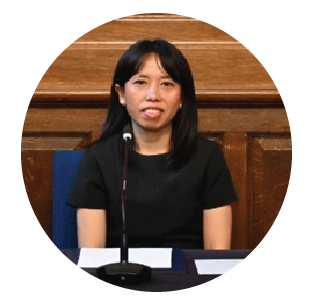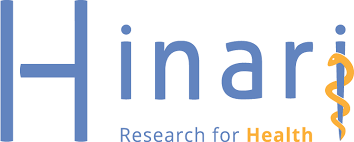THE REDUCTION OF METAL ARTIFACTS USING BAND PASS MEDIAN FILTER ON HEAD CT SCAN

Downloads
Background: One of the artifacts found on the CT scan is a metal artifact. Metal artifacts are caused by metal objects present in patients' bodies. The file of metal artifacts can cover the organ that will be evaluated, and it can be inferred with the pixel value (CT number) assessment of the tissue around the metal. Purpose: To determine the effect of the band pass median filter and find the optimal filter to reduce metal artifacts on the head CT scan. Method: A total of 43 samples of patients's files from head CT-scan without any contrast were reconstructed using four band pass median filters and obtained R1, R2, R5, and R10 filters. Two radiology specialists were assessed for the reduction of metal artifacts using the ImageJ application. Result: Four variations of the filter affected the reduction of metal artifacts because the band pass median filter maintained a point that was close to its neighboring points and points that were different from its neighboring points by replacing the value of the pixel with the median value of the grey level of neighboring pixels. The optimal filter recommendation is the R1 filter because it has the largest SNR value (16.9773) and the smallest RMSE value (8.57501) so that the result of the image is more informative and has a diagnostic value. Conclusion: The four filter variations were affected by reducing metal artifacts. Images with substantial SNR and fractional RMSE values produced an image that was more informative and still had diagnostic value.
Athira, N., 2012. Efek Filtrasi Artefak pada Citra Computed Tomography (CT) Fantom Kepala.
Azwar, S., 2003. Sikap Manusia, Teori dan Pengukurannya, 2 nd. ed. Pustaka Pelajar, Yogyakarta.
Barrett, J.F., Keat, N., 2004. Artifacts in CT : Recognition and Avoidance. Radiographics Vol.24(6), Pp. 1679-1691.
Basuki, A., 2005. Image Filtering. In: Pengolahan Citra Digital Menggunakan Visual Basic. Graha Ilmu, Yogyakarta.
Bontrager, K.L., Lampignano, J.P., 2005. Textbook of Radiographic Positioning and Related Anatomy, 6 th. ed. Elsevier Mosby, New York.
Bushberg, J.T., Seibert, J.A., Leidholdt, Jr., E.M., Boone, J.M., 2002. The Essential Physics of MedicalImaging, 2nd Edition. In: The Essential Physics ofMedical Imaging, 2nd Edition. Lippincott Williams& Wilkins.
Dendy, P.P., Heaton, B., 1999. Physics for Diagnostic Radiology, 2 nd. ed. Institute of Physics Publishin, Bristol and Philadelphia.
Dove, E.L., 2004. Notes on Computerized Tomography.
Gjesteby, L., Man, B. De, Jin, Y., Paganetti, H., Verburg, J., Giantsoudi, D., Wang, G., 2016. Metal Artifact Reduction in CT: Where Are We After Four Decades?. IEEE. URL https://ieeexplore.ieee.org/document/7565564
Hakim, A., Slotboom, J., Lieger, O., Schlittler, F., Giger, R., Michel, C., Wiest, R., Wagner, F., 2017. Clinical Evaluation of The Iterative Metal Artefact Reduction Algorithm for Post-operative CT Examination After Maxillofacial Surgery. Dentomaxillofacial Radiol. Vol.46(4).
Iriyanto, S.Y., Zaini, T.M., 2014. Pengolahan Citra Digital. Anugrah Utama Raharja (AURA), Lampung.
Kurniawan, A.N., Widodo, T.S., Soesanti, I., 2013. Penapisan Artifak Logam pada Citra CT-scan dengan Spatial Filter. JNTETI (Jurnal Nas. Tek. Elektro dan Teknol. Informasi) Vol.2(1), Pp. 52-61.
Lee, M.-J., Kim, S., Lee, S.-A., Song, H.-T., Huh, Y.-M., Kim, D.-H., Han, S.H., Suh, J.-S., 2007. Overcoming Artifacts from Metallic Orthopedic Implants at High Field Strength MR Imaging and Multidetector. Radiographics Vol.27(3), Pp. 791-803.
Maziyah, M., Noortjahja, A., 2007. Implementasi VB 6.0 pada Face Detection Berbasis Image Processing untuk Sistem Identifikasi. J. Fis. dan Apl. Vol.3(2), Pp. 070209-1-070209-9.
Munir, R., 2004. Pengolahan Citra Digital dengan Pendekatan Algoritmik. Informatika, Bandung.
Rueden, C.T., Schindelin, J., Hiner, M.C., DeZonia, B.E., Walter, A.E., Arena, E.T., Eliceiri, K.W., 2017. ImageJ for The Next Generation of Scientific Image Data. BMC Bioinformatics Vol.18(529), Pp.1-26.
Saselah, G., Weku, W., Latumakulita, L., 2013. Perbaikan Citra Digital dengan menggunakan Filtering Technique dan Similarity Measurement. d'Cartesian J. Mat. dan Apl. Vol.2(2), Pp. 1-9.
Schneider, C.A., Rasband, W.S., Eliceiri, K.W., 2012. NIH Image to ImageJ: 25 Years of Image Analysis. Nat. Methods Vol.9(7), Pp. 671-675.
Seeram, E., Davidson, R., Bushong, S., Swan, H., 2016. Optimizing the Exposure Indicator as A Dose Management Strategy in Computed Radiography. Radioloogic Technol. Vol.87(4), Pp. 380-391.
Trust, S.G.H., 2009. Buyer's Guided: Multi-Slice CT Scanners. ImPACT Gr.
Utaminingrum, F., Prijono, W.A., 2007. Penggunaan Multistage Adaptive Wiener untuk Menigkatkan Kualitas Citra Digital. J. Teknol. Technoscientia Vol.12(1), Pp. 68-72.
Wedianto, A., Sari, H.L., H, Y.S., 2016. Analisa Perbandingan Metode Filter Gaussian, Mean, dan Median terhadap Reduksi Noise. J. Media Infotama Vol.12(1), Pp. 21-30.
Wicaksono, A.I., 2016. Analisa Pengaruh Filter Kernel Terhadap Reduksi Noise dan Detail Gambar Pada Citra CT Scan Kepala Daerah Temporal pada CT Scan GE 64 Slice Lightspeed. Universitas Airlangga.
Widayati, C.S.W., 2009. Komparasi Beberapa Metode Estimasi Kesalahan Pengukuran. J. Penelit. dan Eval. Pendidik. Vol.13(2), Pp. 182-197.
Yuwono, B., 2010. Image Smoothing Menggunakan Mean Filtering, Median Filtering, Modus Filtering dan Gaussian Filtering. J. Inform. dan Teknol. Inf. Vol.7(1), Pp. 66-75.
Copyright (c) 2022 Journal of Vocational Health Studies

This work is licensed under a Creative Commons Attribution-NonCommercial-ShareAlike 4.0 International License.
- The authors agree to transfer the transfer copyright of the article to the Journal of Vocational Health Studies (JVHS) effective if and when the paper is accepted for publication.
- Legal formal aspect of journal publication accessibility refers to Creative Commons Attribution-NonCommercial-ShareAlike (CC BY-NC-SA), implies that publication can be used for non-commercial purposes in its original form.
- Every publications (printed/electronic) are open access for educational purposes, research, and library. Other that the aims mentioned above, editorial board is not responsible for copyright violation.
Journal of Vocational Health Studies is licensed under a Creative Commons Attribution-NonCommercial-ShareAlike 4.0 International License














































